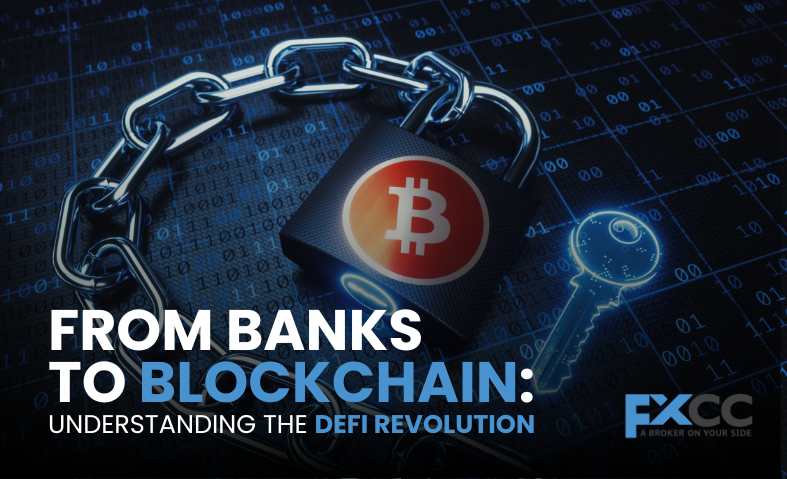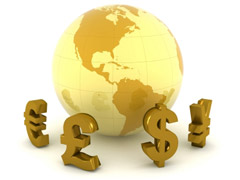For centuries, the imposing structures of conventional banks have stood as the cornerstones of our financial lives, entrusted with our assets and dictating the flow of economic activity. We have placed our trust in their vaults, sought their approval for loans, and navigated the intricacies of their operational frameworks for every transaction. However, beneath this long-established order, a silent yet profound transformation has been taking root, propelled by the groundbreaking capabilities of blockchain technology. This burgeoning movement, known as Decentralized Finance, or DeFi, is fundamentally rethinking the very essence of finance, offering the prospect of a more open, transparent, and universally accessible future.

The Spark of Innovation: Blockchain’s Revolutionary Promise
At the core of DeFi lies blockchain, a distributed and tamper-proof digital record that meticulously logs transactions across a network of interconnected computers. Unlike conventional databases, which are centrally managed by a single authority, blockchain operates without such a central point of control, cultivating transparency and bolstering security through sophisticated cryptographic mechanisms. This foundational alteration in authority represents the very essence upon which the DeFi ecosystem is constructed. It enables the creation of financial applications that operate independently of traditional intermediaries like banks, unlocking possibilities that were previously confined within the boundaries of the conventional financial system.
Decoding DeFi: A New Finance Frontier
The decentralized finance arena represents a vibrant and swiftly evolving digital landscape, teeming with a diverse array of applications that not only replicate but, in some instances, outstrip the capabilities provided by conventional financial institutions. Decentralized exchanges (DEXs), such as Uniswap and SushiSwap, empower users to trade digital currencies directly with one another, eliminating the necessity for centralized order-matching systems. Lending and borrowing protocols, like Aave and Compound, allow individuals to earn interest on their digital holdings or access loans without the often-cumbersome procedures associated with traditional institutions. Stablecoins, digital currencies whose value is pegged to the stability of fiat currencies like the US dollar, provide a reliable medium of exchange within the often-fluctuating cryptocurrency markets.
Beyond these fundamental applications, DeFi encompasses an ever-increasing array of services, including decentralized insurance mechanisms, autonomous asset management protocols, and yield optimization strategies that incentivize users to provide liquidity to various DeFi platforms. This interconnected network of protocols is forging a parallel financial system that operates continuously, is accessible globally, and requires no permission to participate – meaning anyone with an internet connection and a digital wallet can engage.
The Magnetic Pull of Decentralization:
The inherent appeal of DeFi stems from its potential to address certain intrinsic limitations of traditional finance. Transparency stands out as a key advantage; every transaction recorded on a public blockchain is readily verifiable, fostering enhanced trust and accountability. Universal accessibility is another significant draw, particularly for the billions of individuals worldwide who remain unbanked or underbanked and lack access to conventional financial services. By disinter mediating traditional gatekeepers, DeFi can also potentially reduce transaction costs and streamline operational workflows, leading to more efficient and economical financial solutions. Furthermore, the open-source nature of many DeFi projects fuels innovation and community-driven development, resulting in a rapid pace of experimentation and the emergence of entirely new financial building blocks.
Navigating the Untamed Frontier:
Notwithstanding its transformative promise, the DeFi revolution is not devoid of inherent complexities and potential hazards. The relatively early stage of this technology implies that smart contracts, the self-executing code that forms the backbone of DeFi applications, can be susceptible to coding errors and malicious exploits, potentially leading to substantial financial losses. The inherent price instability of the underlying digital currencies also introduces a significant element of risk for participants. Regulatory ambiguity remains a considerable challenge, as governments worldwide grapple with establishing appropriate oversight for this novel and rapidly evolving domain. Moreover, the intricate nature of certain DeFi protocols can create significant barriers to entry for users with less technical expertise, potentially widening existing financial divides.

A Future of Synergy:
The transition from the established world of traditional banks to the full realization of DeFi is unlikely to be a complete displacement. Instead, a more plausible scenario involves a gradual convergence and a symbiotic relationship. Traditional financial institutions are increasingly investigating blockchain technology and even making initial forays into the DeFi ecosystem. We may witness the emergence of hybrid models that strategically combine the strengths of both centralized and decentralized systems.
In essence, the DeFi metamorphosis signifies a fundamental rethinking of our relationship with and understanding of finance. While inherent challenges persist, its potential to deliver greater transparency, broader accessibility, and enhanced efficiency is undeniable. As the underlying technology matures and clear regulatory frameworks are established, DeFi possesses the capacity to fundamentally reshape the financial landscape, empowering individuals and fostering a more inclusive and equitable global economic system. The journey from the familiar vaults of tradition to the innovative frontier of finance is just commencing, and its ultimate destination holds the promise of a radically redefined financial future.


